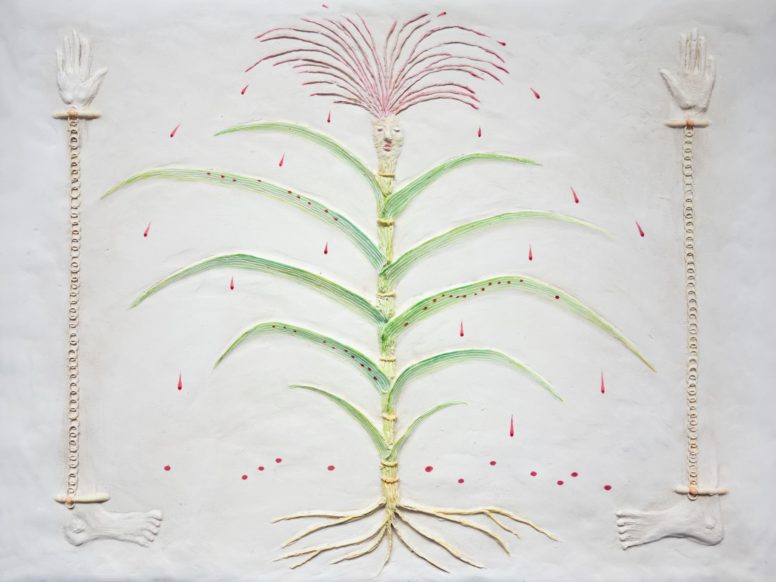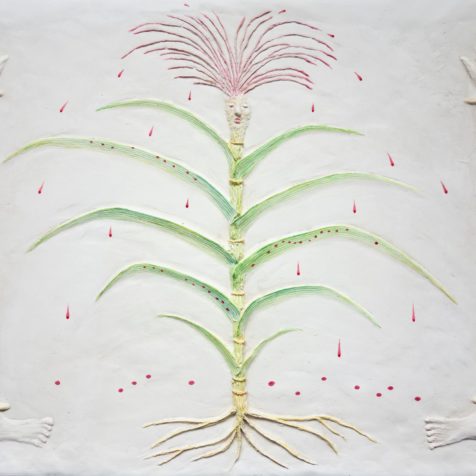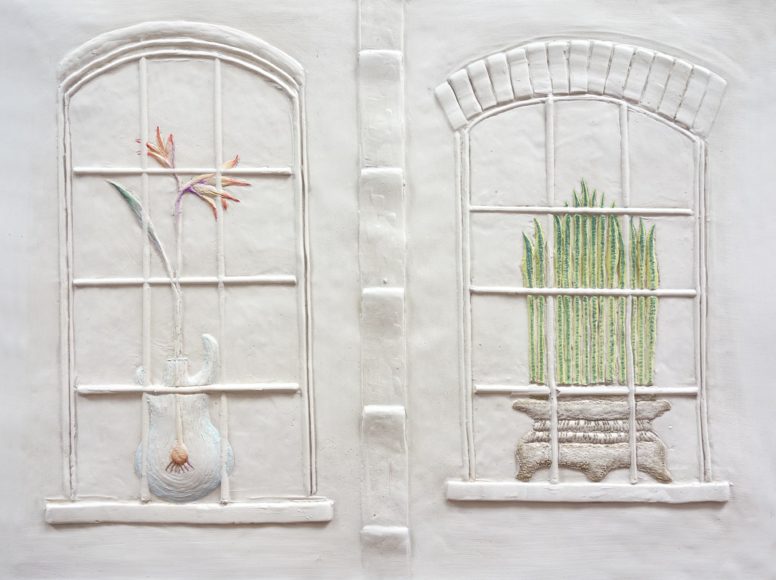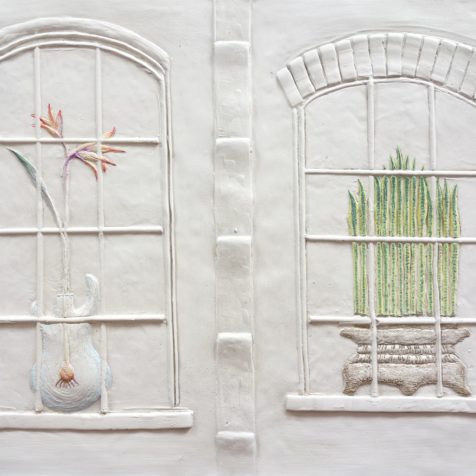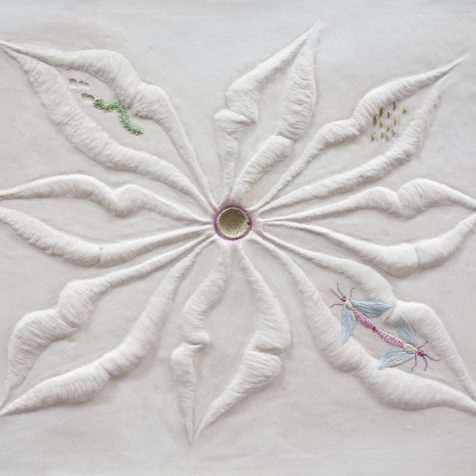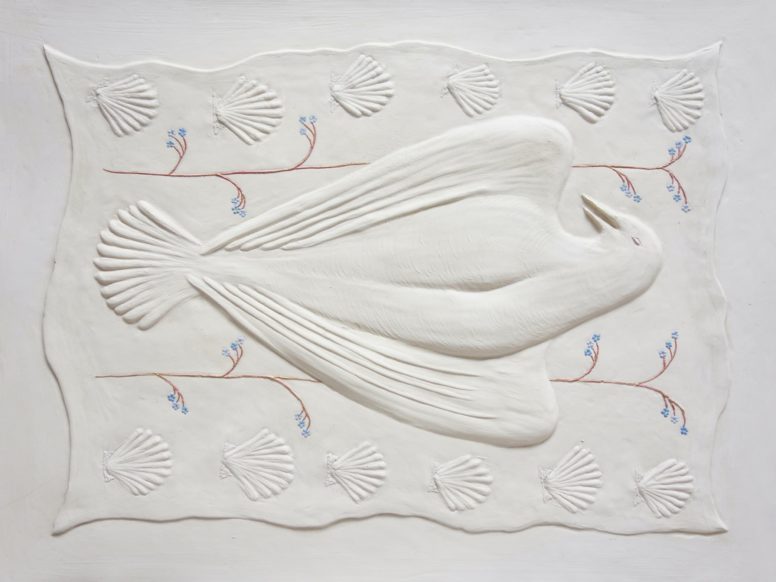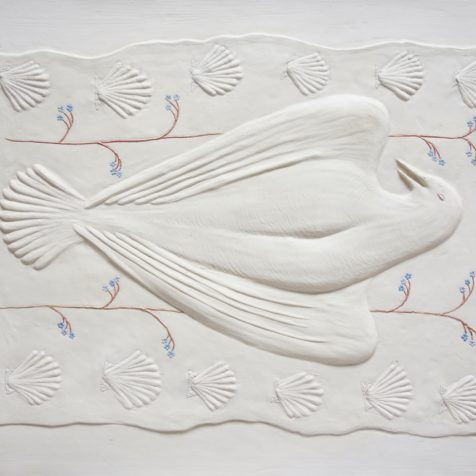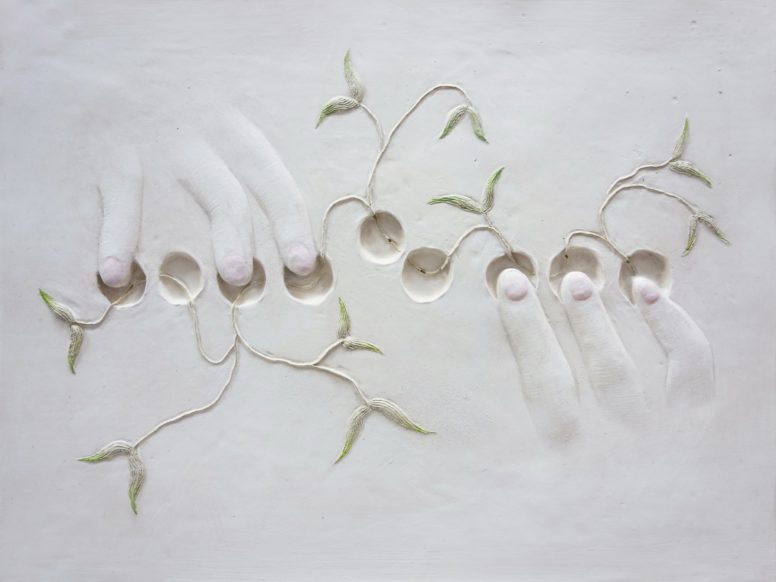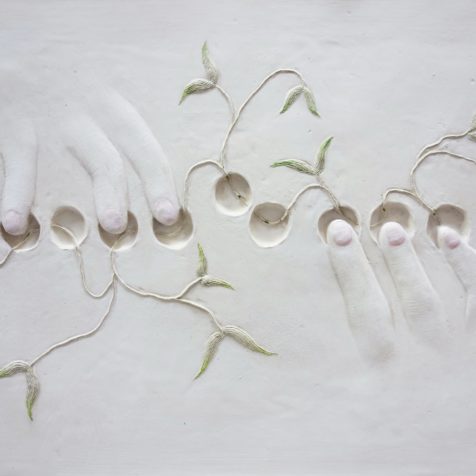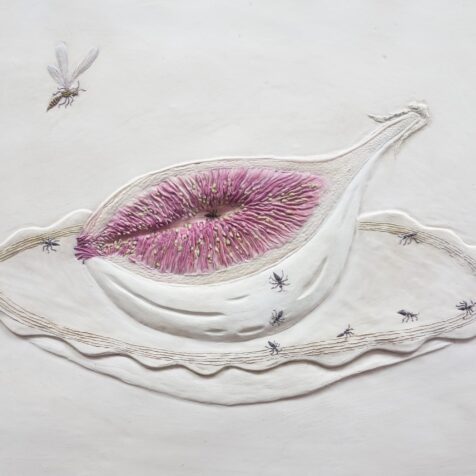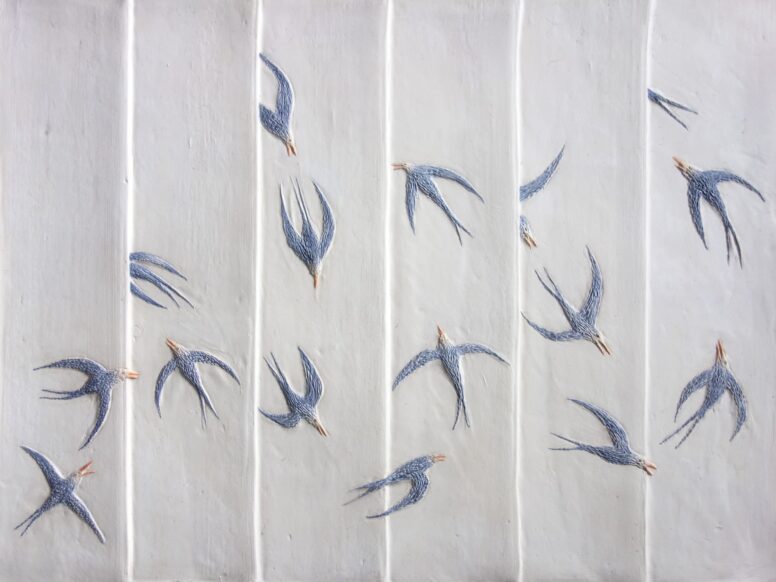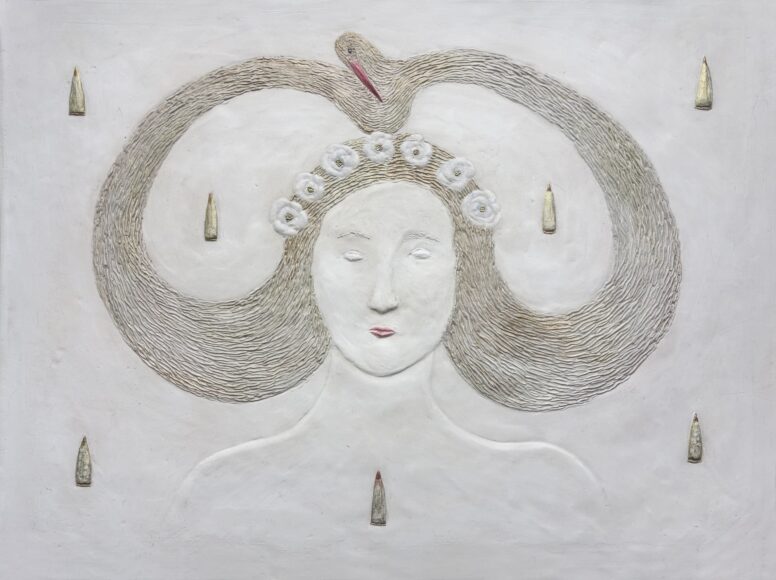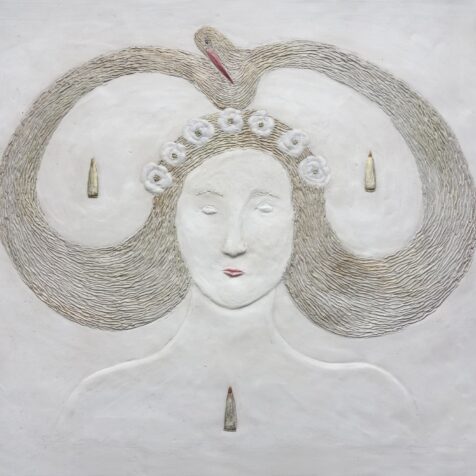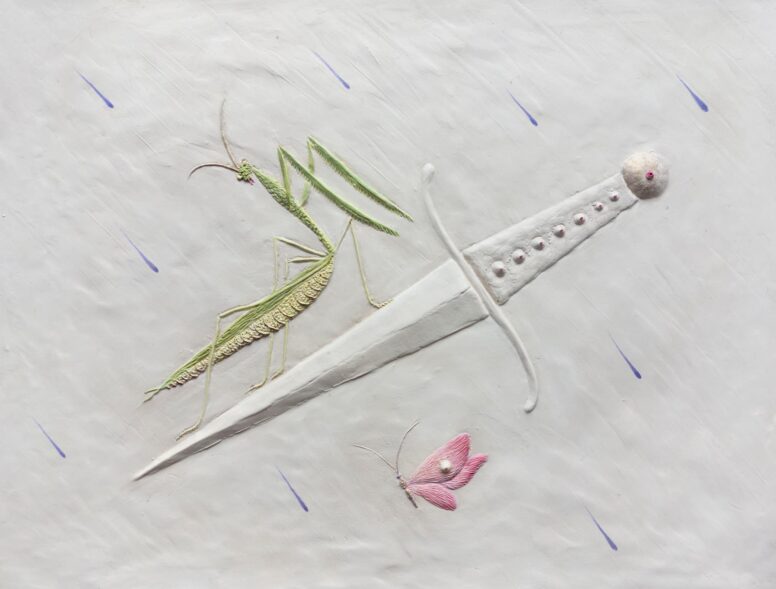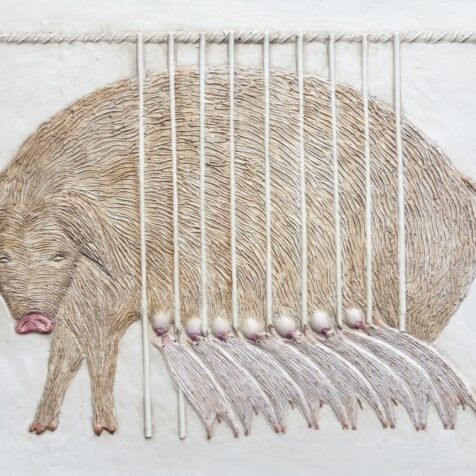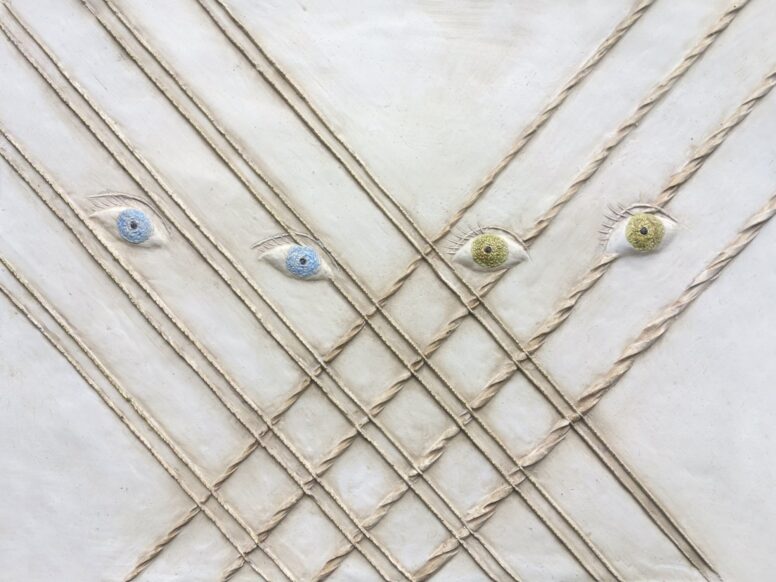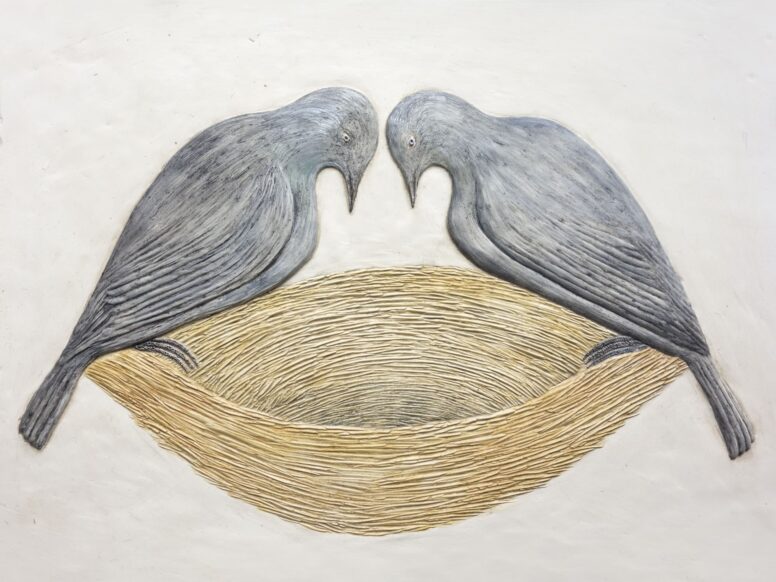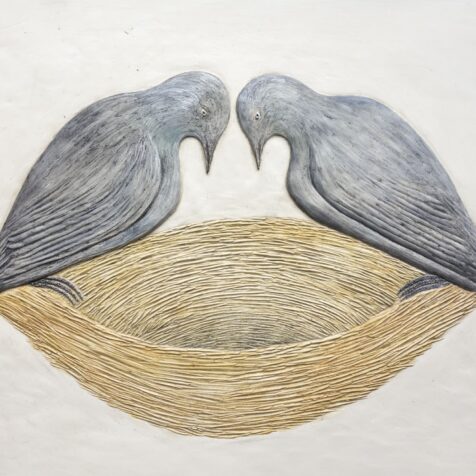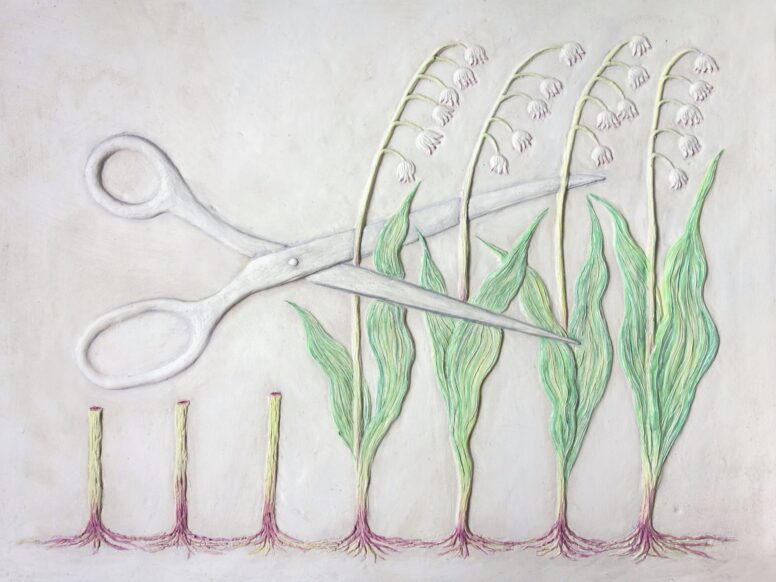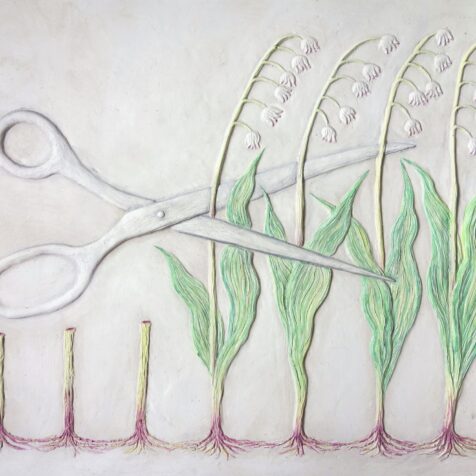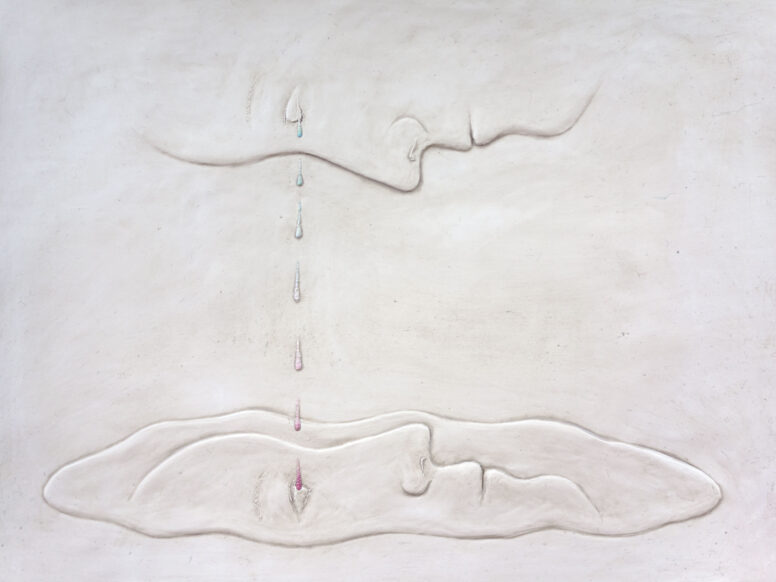Clara Spilliaert
Clara Spilliaert, daughter of a Japanese mother and a Belgian father, was born in Tokyo in 1993 and moved to Belgium in 2009. In 2015 she received her Master’s degree in visual arts at LUCA School of Arts in Ghent, where she additionally studied Ceramic and Glass from 2018 to 2021.
After drawing very intimate diaries for 7 years, Spilliaert explores different media such as video, animation, mural painting and ceramics. She is intrigued by the history of symbols in the formation of individual or collective cultural identities. Within the artist’s universe, notions of the body, myths and the human relationship to nature are questioned through metaphors and poetic imagery.
Her work has been shown at the Rotterdam International Film Festival, Be-Part Waregem, Museum Dr.Guislain Ghent, SEAS Scharpoord Knokke-Heist, LLS Paleis Antwerp, etc.
In 2020 she won the Grand Prix of CAF Award, Japan’s most famous art award for students. As part of this award, she held her first solo exhibition in Tokyo in early 2022 and released a publication by Borgerhoff & Lamberigts with a selection of 240 diary drawings.
These are the works she made for B’Rock:
1. Have you always known you wanted to be an artist? How did this express itself as a child?
As a child, I loved playing in the garden, going to the rivers and the mountains. Even though I grew up in Tokyo, my parents often took me on outings in nature.
At home, I loved drawing my grandmother, every time the drawing would hang on the fridge, I was proud of it. As I grew older, I threw myself into studying and was a model student, never thinking of becoming an artist. Until, at 16, I entered the art academy in Bruges for a year, out of curiosity. I didn’t speak Dutch then so I used my drawings to communicate. That was the beginning of eight years of diary drawing resulting in thousands of pages. Circumstances kept me studying in Belgium. It was a necessity to express myself in images, which is how I became an artist.
2. How would you describe your own art?
Since my first step into art was something very personal and intimate, that remains characteristic of my works. The diary drawings started from very close to myself, then I took the step from paper to clay, a medium that is also direct and physical. As it evolved from paper to something spatial, I also connect more with the world. It is then that I realised that my work should not just be my story, but that I can create an openness by adding different layers there and that was an enrichment. I like to use symbols and metaphors.
3. For the B’Rock commission you are using a very special technique, can you explain it briefly ? Why did you choose to work like this?
I make a drawing on a clay plate, I mark it off with boards, I pour liquid plaster into it, which converts the drawing into relief after it hardens.
When I started studying ceramics, I came into contact with many new media, including plaster. Plaster is mainly used to make moulds, to then create (several) “real” works. Often, plaster remains in the background, even though it is such a rewarding and interesting material. I am also fascinated by the metamorphosis that plaster goes through – powder, liquid, solid – and how finely it can take on scratches from on clay. So I can work very freely and spontaneously on a clay plate – which I reuse each time by erasing the previous drawing – and take a plaster cast from it. The plaster plays the main role and I only make one cast so it is a unique work each time. I find that a fascinating contrast to the associations plaster has of being merely a tool and for series production.
Afterwards, I colour the plaster relief with watercolour. Plaster absorbs a lot of water; it is a kind of very thick paper that I can paint over and on. This is a technique that had been bubbling in my head for months and B’Rock’s commission gave me the right opportunity to try it out.
4. How did you start the assignment for B’Rock ?
Searching, especially since I found the theme of the first concert very heavy. To delve into the history of slavery, I read the biography on Joseph Bologne Chevalier de Saint-Georges, but the pain is unimaginable to make a picture around that. After much searching and sketching, I decided to depict sugarcane as the main character, from which blood drips turning into musical notes. This was a difficult process, but I was very happy with the outcome, just like a first birth. The themes that followed allowed me to translate more smoothly into my visual language. Each time, during research work, I acquired new knowledge that I would not have been able to discover otherwise, such as how the pollination of a fig happens. So I learn many new things and it is a pleasure when I can bring the ideas into a scene in metaphorical layers.
5. Where do you draw inspiration from?
From my experiences, from childhood, from everyday questions… very often from things I see with my own eyes and experience with my body. The nature observations I learned from childhood – courtesy of my parents – are an important breeding ground to this day. For instance, the small garden of my rented house is brimming with inspiration – buds, snails, worms, seeds… all sorts of juicy stuff! For B’Rock, I get stimuli – backgrounds of the music/composer, atmosphere, sounds – and search further, sketching visual associations, looking for a point of contact with my interests and living environment.
6. What characteristics do B’Rock and you as an artist have in common?
Drive and curiosity to try something new, energy, desire to create, reinterpreting history in your own way, wanting to move people… and the seriousness and the good laughter at the same time!
7. What do you hope to achieve as an artist in the future?
I want to keep doing many diverse things, and get tormented and happy at the same time from creating, and give people lots of courage!
